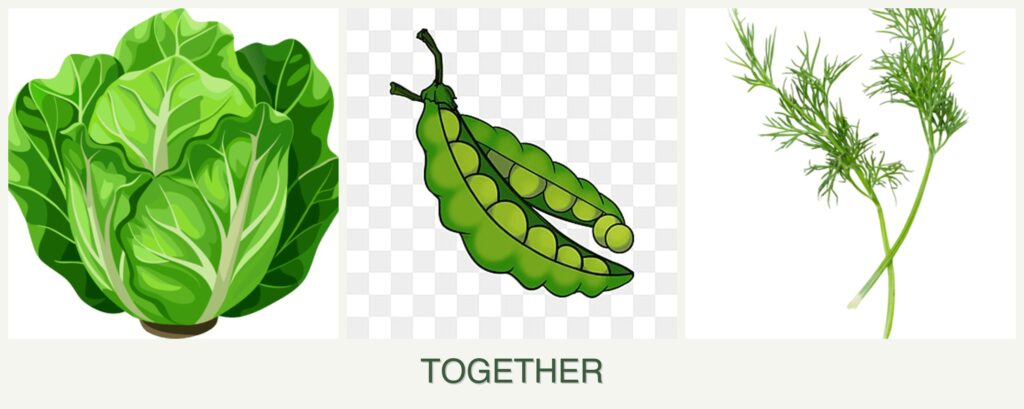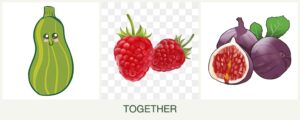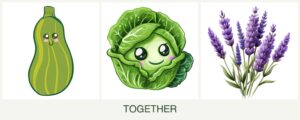
Can you plant lettuce, peas and dill together?
Can You Plant Lettuce, Peas, and Dill Together?
Companion planting is a popular gardening technique that involves growing certain plants together to enhance growth, deter pests, and maximize garden space. Lettuce, peas, and dill are frequently considered for companion planting due to their complementary characteristics. In this article, you’ll learn about their compatibility, benefits, challenges, and best practices for planting them together.
Compatibility Analysis
Yes, you can plant lettuce, peas, and dill together. These plants are compatible because they share similar growth requirements and can benefit each other in various ways. Lettuce prefers cooler temperatures and partial shade, which can be provided by the taller pea plants. Dill, on the other hand, can help attract beneficial insects and deter pests. Key factors for their compatibility include:
- Growth Requirements: All three plants thrive in similar soil conditions and climate zones.
- Pest Control: Dill attracts beneficial insects like ladybugs and predatory wasps, which help control aphid populations that might affect peas.
- Nutrient Needs: Peas, being legumes, can fix nitrogen in the soil, benefiting the nitrogen-loving lettuce and dill.
- Spacing: Proper spacing ensures each plant gets enough light and air circulation, reducing disease risk.
Growing Requirements Comparison Table
| Plant | Sunlight Needs | Water Requirements | Soil pH | Soil Type | Hardiness Zones | Spacing | Growth Habit |
|---|---|---|---|---|---|---|---|
| Lettuce | Partial shade | Moderate | 6.0–7.0 | Loamy | 2–11 | 6–12 in | Low, spread |
| Peas | Full sun | Moderate | 6.0–7.5 | Well-drained | 3–11 | 2–3 in | Climbing |
| Dill | Full sun | Moderate | 5.5–7.5 | Sandy, loamy | 3–11 | 12–15 in | Upright |
Benefits of Planting Together
- Pest Repellent Properties: Dill attracts beneficial insects, reducing pest issues for peas and lettuce.
- Improved Flavor and Growth: Peas enrich the soil with nitrogen, promoting healthier and more flavorful lettuce and dill.
- Space Efficiency: Peas grow vertically, allowing lettuce and dill to spread out below, maximizing garden space.
- Soil Health Benefits: The nitrogen fixation by peas enhances soil fertility for other plants.
- Pollinator Attraction: Dill’s flowers attract pollinators, which can benefit the overall garden ecosystem.
Potential Challenges
- Competition for Resources: Ensure adequate spacing to prevent competition for light and nutrients.
- Different Watering Needs: While their water requirements are similar, monitor soil moisture to avoid overwatering lettuce.
- Disease Susceptibility: Proper air circulation and spacing help reduce the risk of fungal diseases.
- Harvesting Considerations: Harvest lettuce leaves regularly to prevent shading of dill and peas.
- Practical Solutions: Use vertical supports for peas to minimize shading and enhance airflow.
Planting Tips & Best Practices
- Optimal Spacing: Plant peas in rows with lettuce and dill interspersed, maintaining recommended spacing.
- Timing: Sow peas in early spring, followed by lettuce and dill as temperatures stabilize.
- Container vs. Garden Bed: Use garden beds for better root spread and soil management; containers are suitable for small spaces.
- Soil Preparation: Enrich soil with compost to ensure adequate nutrients.
- Additional Companion Plants: Consider adding marigolds or nasturtiums to deter pests and enhance garden aesthetics.
FAQ Section
-
Can you plant lettuce and peas in the same pot?
- Yes, but ensure the pot is large enough to accommodate their root systems and provide adequate nutrients.
-
How far apart should lettuce, peas, and dill be planted?
- Lettuce: 6–12 inches, Peas: 2–3 inches, Dill: 12–15 inches.
-
Do lettuce and peas need the same amount of water?
- Both require moderate watering, but monitor soil moisture to prevent overwatering lettuce.
-
What should not be planted with lettuce, peas, and dill?
- Avoid planting with garlic and onions, which can inhibit growth.
-
Will dill affect the taste of lettuce?
- No, dill will not affect the taste of lettuce but can enhance the overall garden environment.
-
When is the best time to plant lettuce, peas, and dill together?
- Early spring is ideal for peas, with lettuce and dill following as temperatures rise.
By understanding the compatibility and best practices for planting lettuce, peas, and dill together, you can create a thriving vegetable garden that benefits from companion planting principles.



Leave a Reply